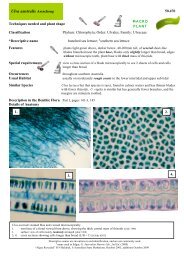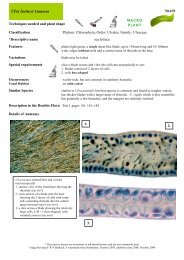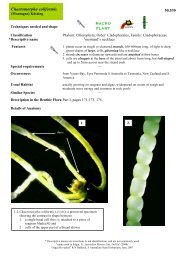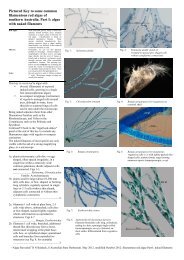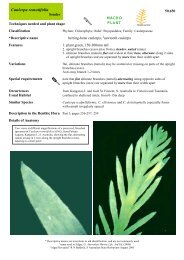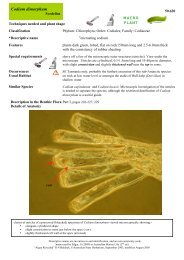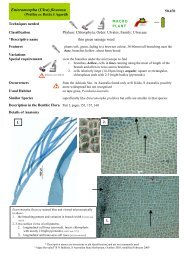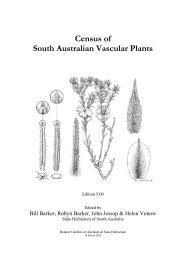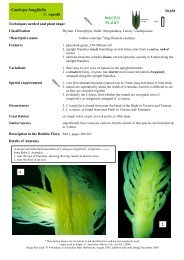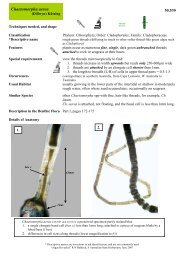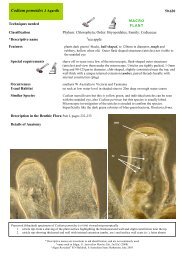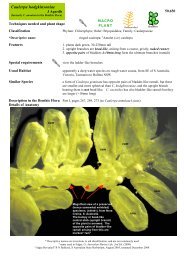Enteromorpha (Ulva) clathrata
Enteromorpha (Ulva) clathrata
Enteromorpha (Ulva) clathrata
Create successful ePaper yourself
Turn your PDF publications into a flip-book with our unique Google optimized e-Paper software.
<strong>Enteromorpha</strong> (<strong>Ulva</strong>) <strong>clathrata</strong><br />
(Roth) Greville<br />
Techniques needed and plant shape<br />
Classification Phylum: Chlorophyta; Order: <strong>Ulva</strong>les; Family: <strong>Ulva</strong>ceae<br />
*Descriptive name green hair-plant<br />
* Descriptive names are inventions to aid identification, and are not commonly used<br />
“Algae Revealed” R N Baldock, S Australian State Herbarium, October 2003; modified February 2009, October 2009<br />
50.470<br />
Features plants light green, 20-80mm tall, much branched irregularly from the base, of thin<br />
threads 1-3mm wide, cylindrical or slightly flat<br />
Variations variable in thread width, can be loosely attached in calm regions, threads<br />
sometimes unbranched<br />
Special requirements view the branches microscopically to find:<br />
1. cells relatively large, box-shaped always in more than 1 line of cells along<br />
hollow threads<br />
2. chloroplasts often occupy only a part of the cell, have toothed edges and 2-4<br />
bright spots (pyrenoids)<br />
Occurrences worldwide in temperate moderate to calm seas<br />
Usual Habitat in the intertidal and shallow water<br />
Similar Species superficially like many filamentous species, especially <strong>Enteromorpha</strong> paradoxa<br />
but that species has numerous, opposite, fine side branches of a single line of cells<br />
Description in the Benthic Flora Part I, pages 157-160<br />
Details of Anatomy<br />
MACRO<br />
PLANT<br />
Radial<br />
branching<br />
<strong>Enteromorpha</strong> <strong>clathrata</strong> (A6510 slide 7570) stained blue and viewed microscopically<br />
1. cell detail of a cylindrical side branch, showing the several lines of cells<br />
2. branching pattern showing irregular side branches containing several lines of cells (pluriseriate)<br />
3. cell detail showing the jagged edges to some chloroplasts<br />
tubular
forms of <strong>Enteromorpha</strong> <strong>clathrata</strong><br />
(Roth) Greville<br />
4. an attached plant (A54573<br />
5. fine, detached hair-like form<br />
(A3343b)<br />
* Descriptive names are inventions to aid identification, and are not commonly used<br />
“Algae Revealed” R N Baldock, S Australian State Herbarium, October 2003; modified February 2009, October 2009




